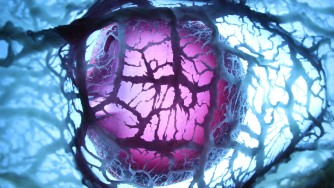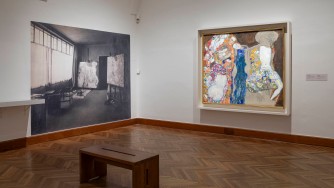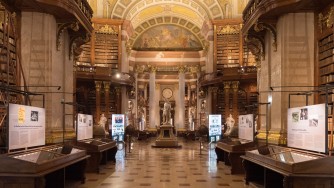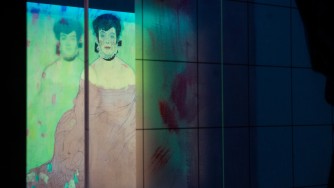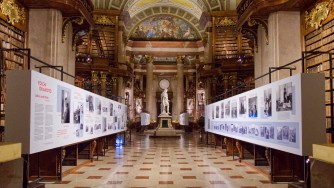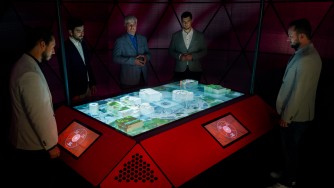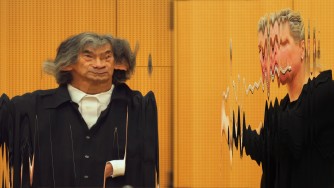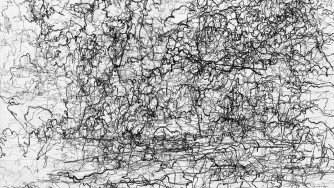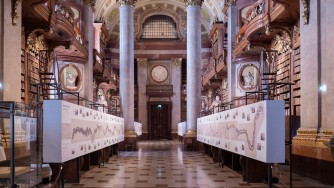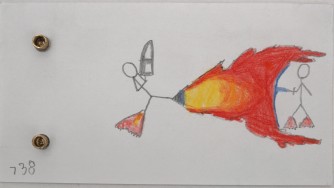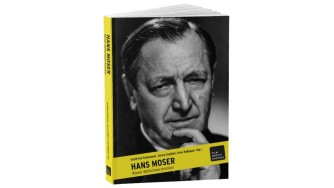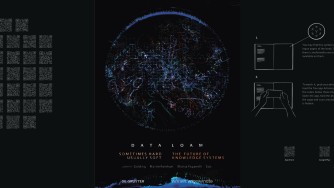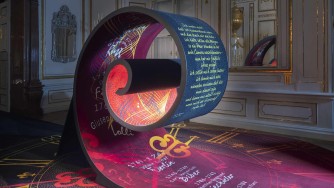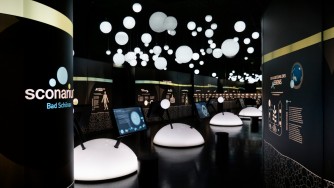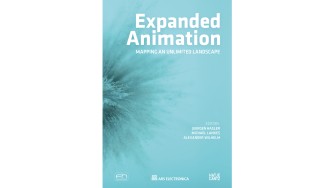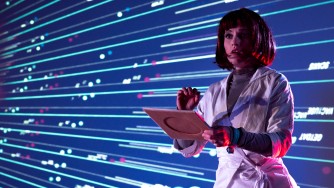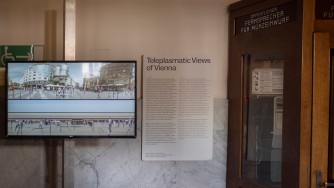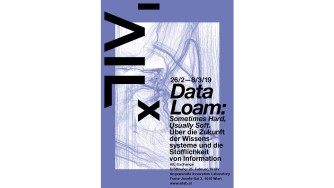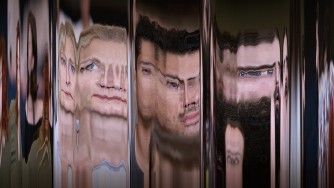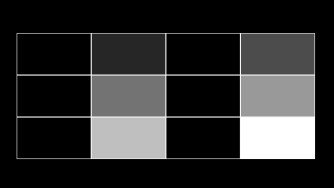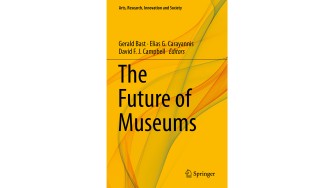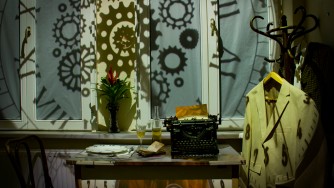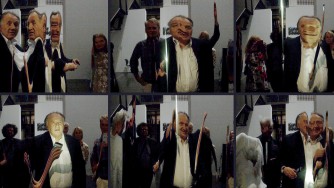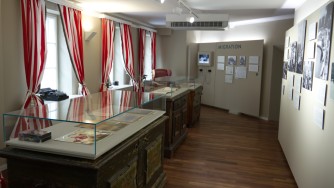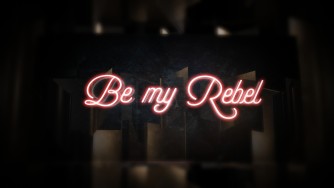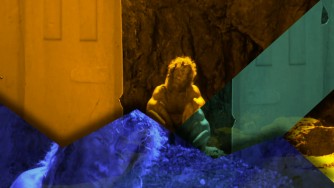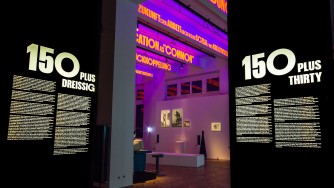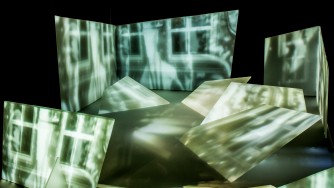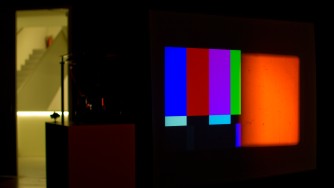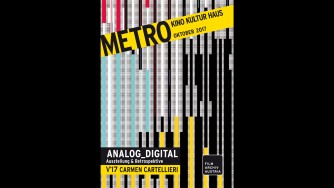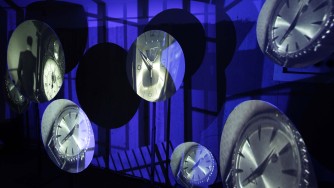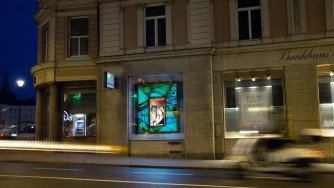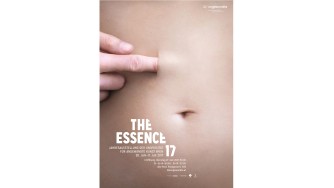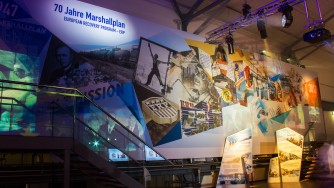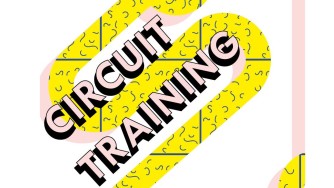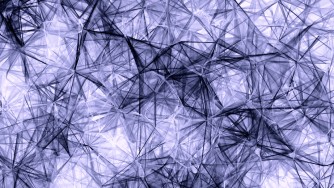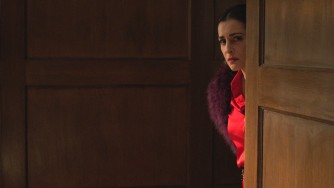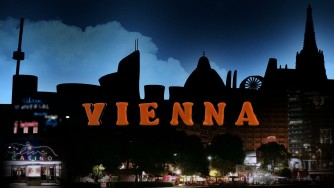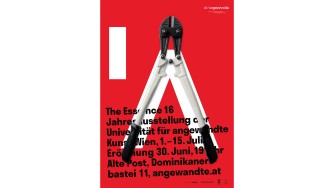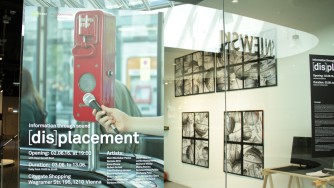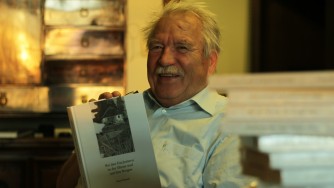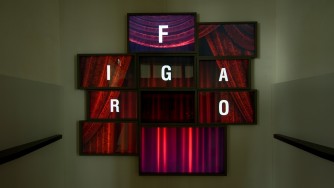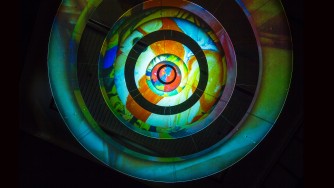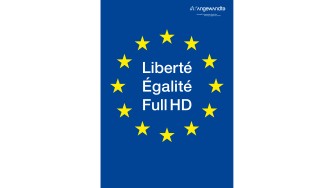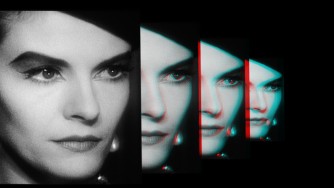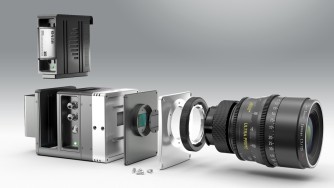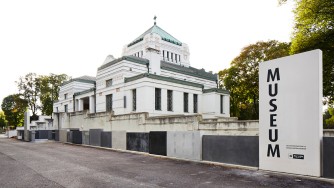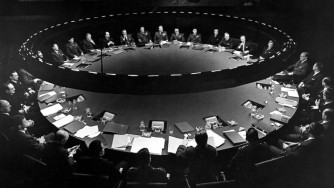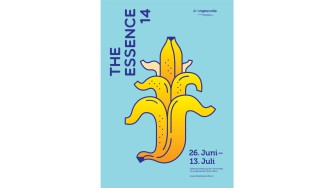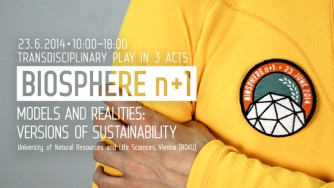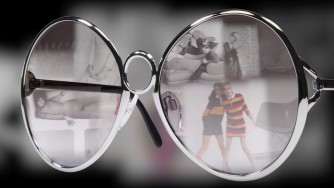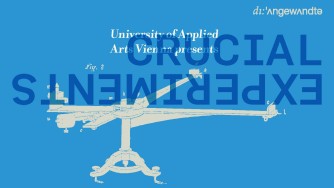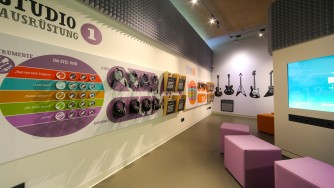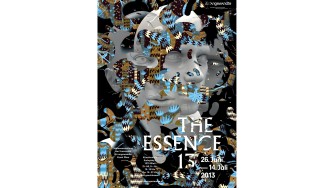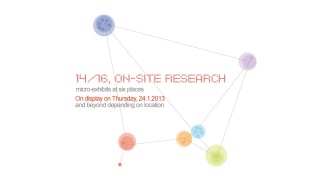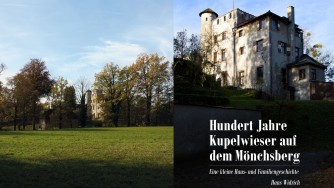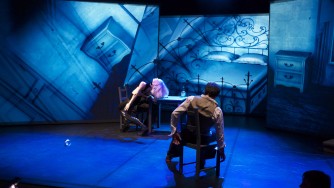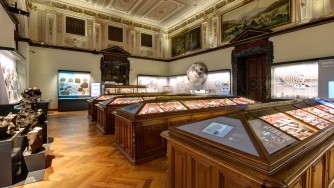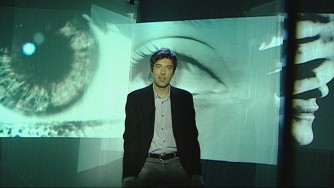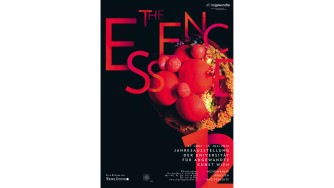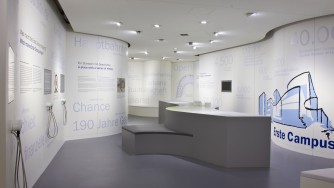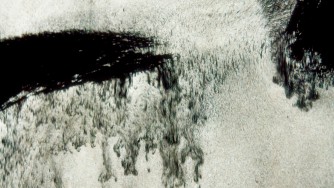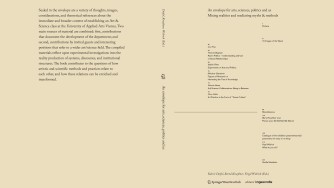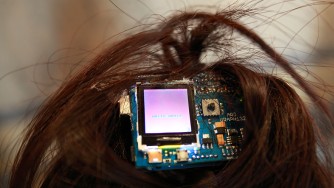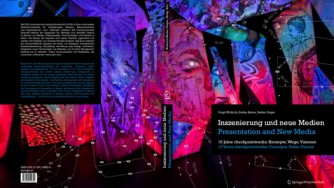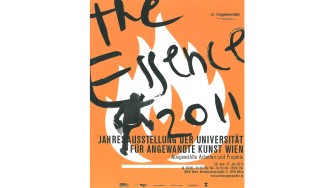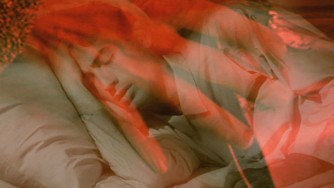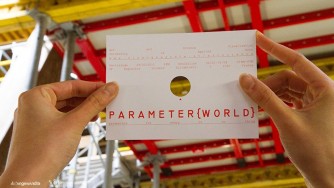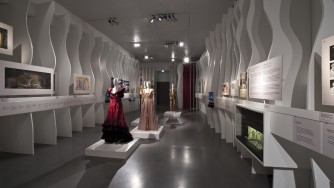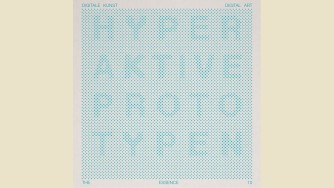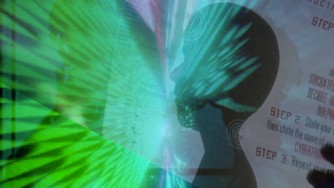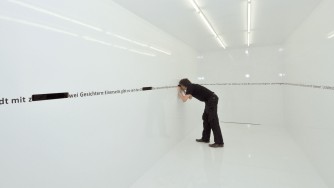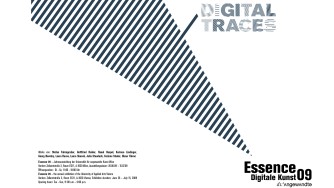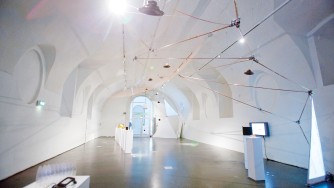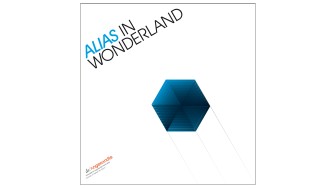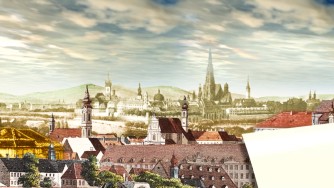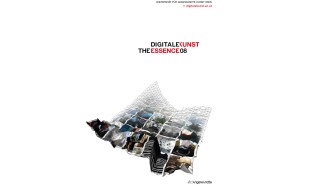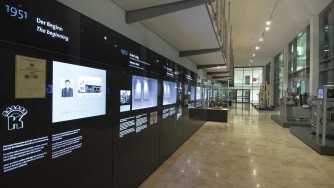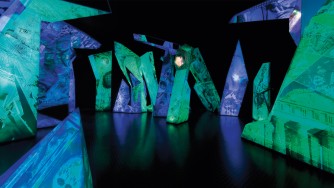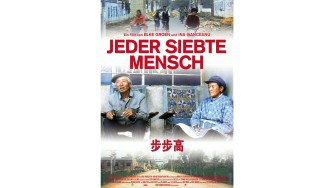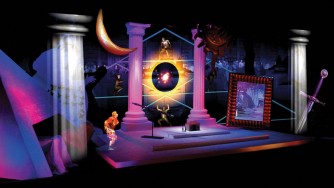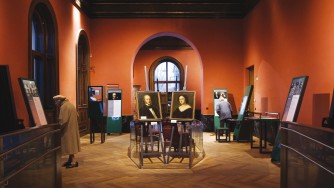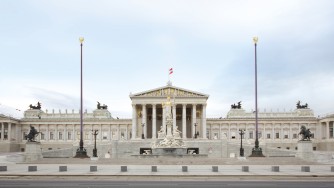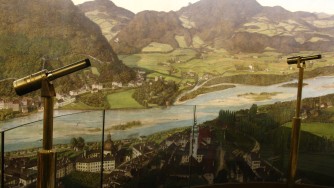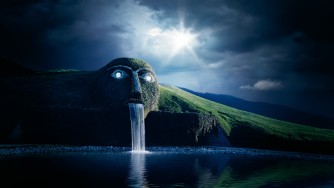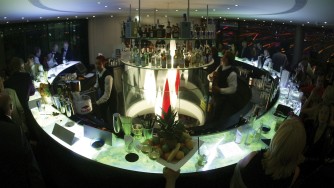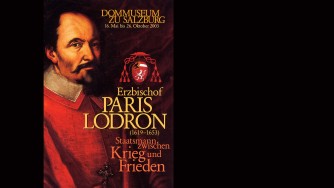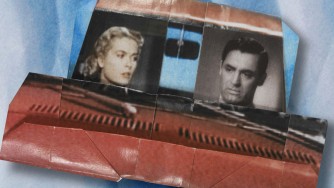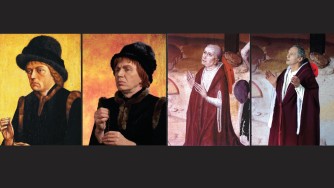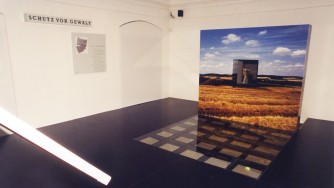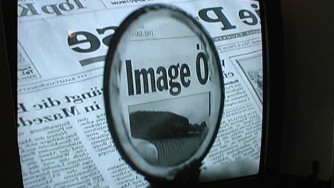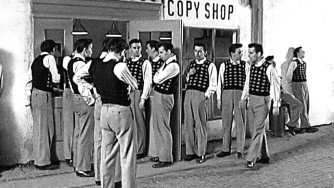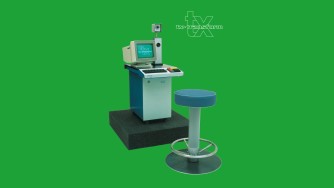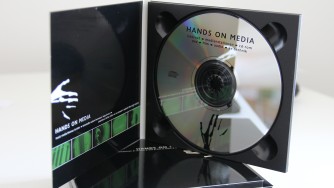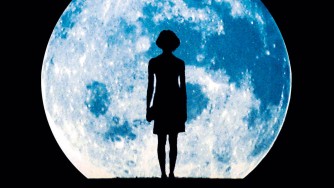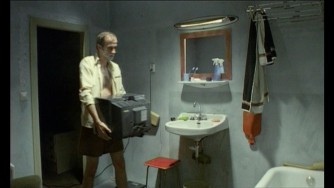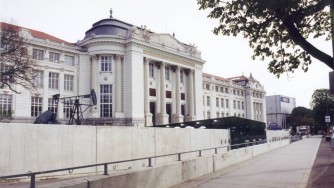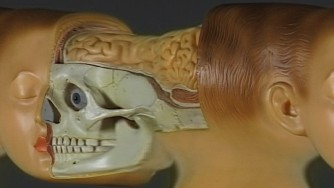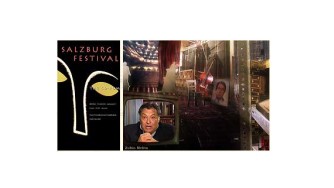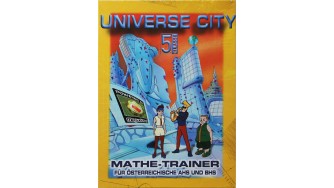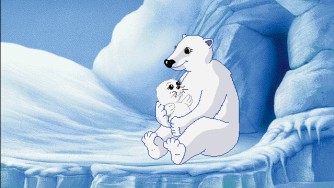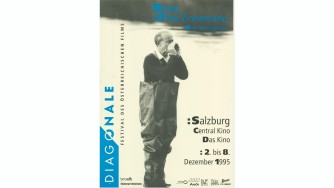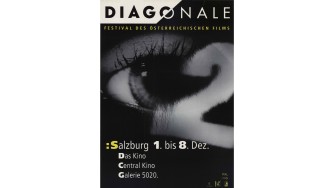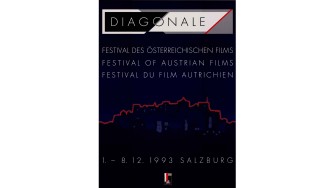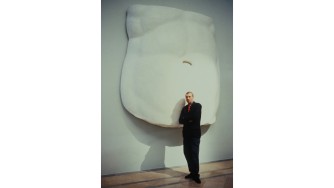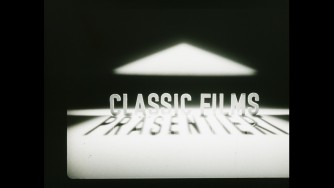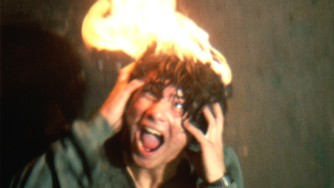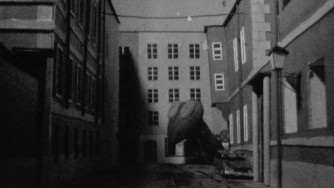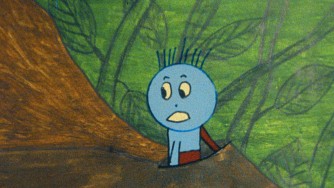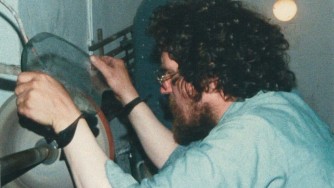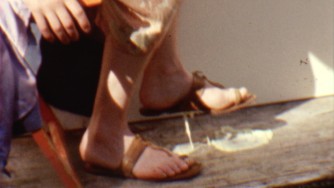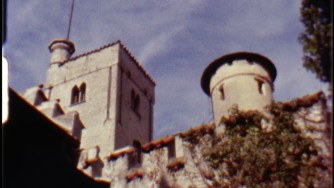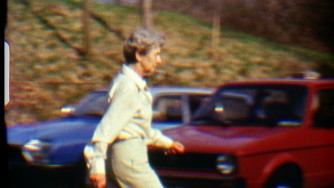Overview of Virgil Widrich's projects
Presentation of all projects
in a wide variety of formats, such as films, exhibitions, installations, multimedia, research, publications and works, which
were produced under the roof of checkpointmedia or in the course of teaching at the University of Applied Arts Vienna. Practically
everything – from 1980 to today.
Screenplay, Film
Micromeo
(in development for 2027+)
A/Lux, 2020, Animation
length: 90 min.
Romeo and Juliet in the microcosm of the human body... Forbidden love between the young Bacterium Micromeo and Antibody-girl Globia threatens the harmony of the immune system, leading to war between ambitious leaders, and finally awakening a genetic monster that is ready to exterminate them all. "Love is stronger than dirt!"
A/Lux, 2020, Animation
length: 90 min.
Romeo and Juliet in the microcosm of the human body... Forbidden love between the young Bacterium Micromeo and Antibody-girl Globia threatens the harmony of the immune system, leading to war between ambitious leaders, and finally awakening a genetic monster that is ready to exterminate them all. "Love is stronger than dirt!"
Exhibition, checkpointmedia, 2025
IN-SIGHT: Gustav Klimt – The Bride
For the exhibition IN-SIGHT: Gustav Klimt – The Bride
at the Upper Belvedere, checkpointmedia (Marc Schuran, Virgil Widrich) was responsible for the exhibition design.
Exhibition, checkpointmedia, 2025
A Century in Pictures. Austria 1925–2025
Graphic production for the exhibition in
the State Hall of the Austrian National Library.
Following „Image.Power.Politics“ and "The Danube – A Journey into the Past," checkpointmedia, in collaboration with Nicole Stadler (Pop.Cut), is once again responsible for the graphic production of an exhibition in the State Hall of the Austrian National Library: "A Century in Pictures. Austria 1925–2025."
Following „Image.Power.Politics“ and "The Danube – A Journey into the Past," checkpointmedia, in collaboration with Nicole Stadler (Pop.Cut), is once again responsible for the graphic production of an exhibition in the State Hall of the Austrian National Library: "A Century in Pictures. Austria 1925–2025."
Exhibition, checkpointmedia, 2025
Klimt. Pigment & Pixel – Rediscovering Art Through Technology
The exhibition "Gustav Klimt. Pigment & Pixel" at the Belvedere Vienna combines art and technology, offering new insights
into Klimt's painting techniques. checkpointmedia developed the exhibition design, where originals, technological analyses,
and digital reconstructions are presented in three sections.
Exhibition, checkpointmedia, 2023
IMAGE POWER POLITICS: Yoichi Okamoto. Post-war photography icon
Graphic design of the exhibition in the State Hall of the Austrian National Library.
checkpointmedia, 2022
City Dome for Rosenbauer AG - Everything for that moment
A multimedia look into the future of firefighting
at Interschutz 2022 in Hannover.
Film, 2022
Microconcert Philharmonic State Orchestra Hamburg
With the microconcerts, Kent Nagano, Georges Delnon and the Philharmonic
State Orchestra Hamburg provide a response to the pandemic and its consequences of media overload. In collaboration with international
video artists, a cycle of five audiovisual concert programs has been created in which classical music meets contemporary video
art. Following an exclusive streaming on Radio France, the videos are also online on the channels of the Philharmonic State
Orchestra and the Hamburg State Opera.
Virgil Widrich visualized five pieces of music using the film technique tx-transform, which exchanges the time and space axes.
Link to YouTube.
Virgil Widrich visualized five pieces of music using the film technique tx-transform, which exchanges the time and space axes.
Link to YouTube.
Research, University
of Applied Arts, 2021
Radical Matter
The idea of "Radical Matter" owes its vitality to the wonderfully
strange behaviour that was predicted at the scale of atoms and subatomic particles. For a long time these so-called quantum
effects were pure theory, but nowadays they are more and more accessible and better understood – even to a degree that building
extremely powerful computers based on this technology seems only a few years away.
In the past, ground-breaking scientific discoveries often have shifted our understanding of the world. It is only logical that also the laws of quantum physics will affect the way we think and act as humans over time. In the case of quantum physics however this might be a quite radical change, since it contradicts the world as we know it fundamentally: there, linear time does not exist as such; in quantum mechanics, time can even go backwards. The very same object can appear at the same moment at several places millions of light years away. And as if this were not strange enough, every attempt to witness these events would change their outcome in an unpredictable way.
At the moment, the world of quantum physics however is only accessible via complex machines. In order to interact with this unknown universe, we need to invent new tools and languages in order to become an active part or even inhabitant of this part of reality. As a consequence our lives will have to interweave with that of machines in an unprecedented way that will exceed today's predictions by far. This closer and more subtle co-existence with complex machines will open up new worlds – not only in computing and in the sciences – but also in philosophy, art, literature, engineering, gaming.
The intent here is not to design a "new product" – instead, we intend to show how this new alliance between the sciences and the arts is critical in order to envision future possibilities. We want to explore practical ways to implement their impact on our planet and ourselves and think that this can only be done by foregrounding a non-hierarchical, arts practice led research.
The result of the "Radical Matter" project very likely will be something along the lines of a "roadmap" – a guide to the unknown that is written while we are on the journey. This however is an unconventional map, one that takes account of the fact that we are, as we are moving, changing the very events being mapped. Perhaps unsurprisingly, this kind of approach mirrors the very techniques required for art making and, indeed, for all forms of invention.
In the past, ground-breaking scientific discoveries often have shifted our understanding of the world. It is only logical that also the laws of quantum physics will affect the way we think and act as humans over time. In the case of quantum physics however this might be a quite radical change, since it contradicts the world as we know it fundamentally: there, linear time does not exist as such; in quantum mechanics, time can even go backwards. The very same object can appear at the same moment at several places millions of light years away. And as if this were not strange enough, every attempt to witness these events would change their outcome in an unpredictable way.
At the moment, the world of quantum physics however is only accessible via complex machines. In order to interact with this unknown universe, we need to invent new tools and languages in order to become an active part or even inhabitant of this part of reality. As a consequence our lives will have to interweave with that of machines in an unprecedented way that will exceed today's predictions by far. This closer and more subtle co-existence with complex machines will open up new worlds – not only in computing and in the sciences – but also in philosophy, art, literature, engineering, gaming.
The intent here is not to design a "new product" – instead, we intend to show how this new alliance between the sciences and the arts is critical in order to envision future possibilities. We want to explore practical ways to implement their impact on our planet and ourselves and think that this can only be done by foregrounding a non-hierarchical, arts practice led research.
The result of the "Radical Matter" project very likely will be something along the lines of a "roadmap" – a guide to the unknown that is written while we are on the journey. This however is an unconventional map, one that takes account of the fact that we are, as we are moving, changing the very events being mapped. Perhaps unsurprisingly, this kind of approach mirrors the very techniques required for art making and, indeed, for all forms of invention.
Exhibition, checkpointmedia, 2021
The Danube. A journey into the past
Graphic design of the spectacular 44-meter reproduction
of the famous Pasetti map.
Film, 2021
There is exactly enough time
A 2021, short film, DCP, 4K/2K, color, 1:1.85, stereo
length: 2 min.
Link to the trailer and to the whole film.
Oskar Salomonowitz, the 12-year-old son of filmmakers Anja Salomonowitz and Virgil Widrich, had drawn 206 frames of a flip book when he died in an accident. Using the remaining blank sheets, his father continued drawing the film.
"Oskar never showed me his drawings in detail because he did not want to showcase an unfinished film. At first, I had no idea whatsoever how the story should continue, and the beginning was very difficult for me. I practiced Oskar's stroke for a long time for fear of doing something wrong, but that's what definitely would have made my style be different from his, because he wasn't afraid at all. Oskar conceived his project as a flip book and not necessarily as a film, but his stack would have been far too thick to flip through evenly. In the end, I would have suggested to him that we photograph his drawings and then turn them into an animated film with sound. I am sure he would have liked this format very much and it being screened in the cinema." (Virgil Widrich)
Winner of 86 international film awards!
length: 2 min.
Link to the trailer and to the whole film.
Oskar Salomonowitz, the 12-year-old son of filmmakers Anja Salomonowitz and Virgil Widrich, had drawn 206 frames of a flip book when he died in an accident. Using the remaining blank sheets, his father continued drawing the film.
"Oskar never showed me his drawings in detail because he did not want to showcase an unfinished film. At first, I had no idea whatsoever how the story should continue, and the beginning was very difficult for me. I practiced Oskar's stroke for a long time for fear of doing something wrong, but that's what definitely would have made my style be different from his, because he wasn't afraid at all. Oskar conceived his project as a flip book and not necessarily as a film, but his stack would have been far too thick to flip through evenly. In the end, I would have suggested to him that we photograph his drawings and then turn them into an animated film with sound. I am sure he would have liked this format very much and it being screened in the cinema." (Virgil Widrich)
Winner of 86 international film awards!
Bibliography, Publication, 2020
Hans Moser. Weltschmerzkomiker
Text contribution "Hans Moser in North Korea", Virgil Widrich in conversation with Arno Rußegger,
edited by Gottfried Schlemmer, Georg Seeßlen, Arno Rußegger. © Filmarchiv Austria, 2020.
To this day, Hans Moser is the epitome of Viennese humor and comedy that is perceived as typically Austrian. Even during his lifetime, his name became a household word and has become detached from his work. Even those who have never seen a film with him know what and who is meant when he is mentioned. Moser represents the comedic "legacy" of the First and Second Republics like no other. This book serves as a guide through the impressive oeuvre that Moser left behind. Rediscovering it today, over 50 years after his death, is like opening a treasure chest containing countless jewels. Hans Moser. Wiener Weltschmerzkomiker is nothing less than a multifaceted approach to Hans Moser as artist, icon, human being.
"Hans Moser is absolutely singular, incomparable, a solitaire in fact. A world actor!" Elfriede Jelinek
To this day, Hans Moser is the epitome of Viennese humor and comedy that is perceived as typically Austrian. Even during his lifetime, his name became a household word and has become detached from his work. Even those who have never seen a film with him know what and who is meant when he is mentioned. Moser represents the comedic "legacy" of the First and Second Republics like no other. This book serves as a guide through the impressive oeuvre that Moser left behind. Rediscovering it today, over 50 years after his death, is like opening a treasure chest containing countless jewels. Hans Moser. Wiener Weltschmerzkomiker is nothing less than a multifaceted approach to Hans Moser as artist, icon, human being.
"Hans Moser is absolutely singular, incomparable, a solitaire in fact. A world actor!" Elfriede Jelinek
Bibliography, Publication, 2020
Data Loam Sometimes Hard, Usually Soft. The Future of Knowledge Systems
Big data: A matter of art
As a reaction to the dominant effect and interpretive authority of the digital, Data Loam combines radical approaches based on positions taken in the international practice of contemporary art.
Previously: insistence on indexicality and the instrumental reduction of knowledge. Instead: a new metric that requires play, curiosity, experiment, and risk. As an urgent response to the continually growing flood of information that libraries, search engines, and cultural institutions are exposed to, the authors develop approaches that suggest and permit sensual logic, causal permeability, and new forms of man–machine interaction.
Data Loam focuses on the future of knowledge systems in texts about artificial intelligence, cybernetics, and cryptoeconomics – as a means of counteracting end-of-the-world fears.
New approaches to AI, cybernetics, and cryptoeconomics in the context of contemporary art
Alternative models of data mining, indexing, correlation
The significance of knowledge in the 21st century as an expression of sense/sensuality, experiment, risk
As a reaction to the dominant effect and interpretive authority of the digital, Data Loam combines radical approaches based on positions taken in the international practice of contemporary art.
Previously: insistence on indexicality and the instrumental reduction of knowledge. Instead: a new metric that requires play, curiosity, experiment, and risk. As an urgent response to the continually growing flood of information that libraries, search engines, and cultural institutions are exposed to, the authors develop approaches that suggest and permit sensual logic, causal permeability, and new forms of man–machine interaction.
Data Loam focuses on the future of knowledge systems in texts about artificial intelligence, cybernetics, and cryptoeconomics – as a means of counteracting end-of-the-world fears.
New approaches to AI, cybernetics, and cryptoeconomics in the context of contemporary art
Alternative models of data mining, indexing, correlation
The significance of knowledge in the 21st century as an expression of sense/sensuality, experiment, risk
Exhibition, checkpointmedia, 2020
Music everywhere!
The princely court of Salzburg – a centre of European musical culture 1587 – 1807
19.7.2020 to 2.1.2022, DomQuartier Salzburg
Artistic direction: Virgil Widrich, exhibition design: Hans Kudlich
19.7.2020 to 2.1.2022, DomQuartier Salzburg
Artistic direction: Virgil Widrich, exhibition design: Hans Kudlich
Exhibition, checkpointmedia, 2019
sconarium Visitor Centre for Bad Schönau
Artistic director of the exhibition.
Bibliography, Publication, 2019
Expanded Animation – Mapping an unlimited landscape
Text contribution
"Images between Digital Realism and Analog Believability" by Virgil Widrich in: Expanded Animation – Mapping to Unlimited
Landscape
Film production, Stage, 2019
Nova – Imperfection Perfection
An opera by Franz Danksagmüller for a singer, viola, live
electronics, two virtual singers and a digital stage design.
Singularity – the fusion of mankind with artificial intelligence to form an omnipotent and omniscient network – is the starting point of the opera. While our planet threatens to become less and less habitable, life in the virtual world seems increasingly tempting.
People connect more and more with the system in which everything seems to be possible. There are no limits, no unfulfillable desires and the possibilities of expansion seem to be infinite - detached from the limiting body.
But with infinity, the boundlessness and the fact that everyone can reach everything or create himself, ambition, incentive and all other emotions disappear. Arbitrariness and indifference spread and the exponential development leads to a temporal standstill.
Because all individuals have grown together to a system, the differences finally cancel each other out, a single consciousness, a singular being remains. All occurrences become predictable – there are no more surprises, no more liveliness.
The system recognizes the danger of standstill, which would be synonymous with the dissolution of its existence, and creates a new being: Nova.
As an unpredictable and independent counterpart, Nova should challenge the system again and thus bring it back to new life.
World premiere: 20 June 2019, 19:30 p.m., Orchesterzentrum
NRW, Dortmund.
Further performances: Friday, 21 June 2019, 11:00 a.m. and 15:00 p.m.
Singularity – the fusion of mankind with artificial intelligence to form an omnipotent and omniscient network – is the starting point of the opera. While our planet threatens to become less and less habitable, life in the virtual world seems increasingly tempting.
People connect more and more with the system in which everything seems to be possible. There are no limits, no unfulfillable desires and the possibilities of expansion seem to be infinite - detached from the limiting body.
But with infinity, the boundlessness and the fact that everyone can reach everything or create himself, ambition, incentive and all other emotions disappear. Arbitrariness and indifference spread and the exponential development leads to a temporal standstill.
Because all individuals have grown together to a system, the differences finally cancel each other out, a single consciousness, a singular being remains. All occurrences become predictable – there are no more surprises, no more liveliness.
The system recognizes the danger of standstill, which would be synonymous with the dissolution of its existence, and creates a new being: Nova.
As an unpredictable and independent counterpart, Nova should challenge the system again and thus bring it back to new life.
Film production, Exhibition, 2019
Teleplasmatic Views of Vienna
On two corresponding screens the video installation "Teleplasmatic
Views of Vienna" deconstructs and reinterprets Vienna's Stephansplatz.
Exhibition, Research, University of Applied Arts, 2019
Data Loam - Sometimes Hard, Usually Soft
Exhibition on the research
project on contexts of meaning through categorization and indexation.
Film, Research, 2018
tx-reverse
A space time cut through cinema.
Austria/Germany 2018, short film, DCP, color, 1:2,39 / "tx-reverse 360°": Austria/Germany 2019, installation in 360°, 10K
Length: 5 min.
Link to the trailer.
What is behind the cinema screen? It is not surprising that cinema-in-the-cinema scenes are often used in horror films. For they irritate and unsettle by reminding us – the immobile viewers hidden in the cosy darkness – of our own questionable position. What if the forces of unlimited imagination penetrate through the canvas into our reality? What if the auditorium dissolves and with it the familiar laws of cinema itself? In a way never before seen, "tx-reverse" shows this collision of reality and cinema and draws its viewers into a vortex in which the familiar order of space and time seems to be suspended.
Back in the 1990s, Martin Reinhart invented a film technique called "tx-transform", which exchanges the time (t) and space axis (x) in a film. Normally, each individual film frame represents the entire space, but only a brief moment of time (1/24 second). In the case of tx-transformed films, however, the opposite is true: each film frame shows the entire time, but only a tiny part of the space – in cuts along the horizontal spatial axis, the left part of the image thus becomes the "before", the right part the "after".
20 years after Martin Reinhart and Virgil Widrich used this film technique for the first time in a short film ("tx-transform", 1998), they again deal with the question of which previously unseen world arises when space and time are interchanged, aptly in a cinema and at full 360°: at the Babylon Kino in Berlin they filmed with the OmniCam-360 about 135 actors and calculated the installation "tx-reverse 360°" for the ZKM from this material.
Winner of 39 international film awards!
Austria/Germany 2018, short film, DCP, color, 1:2,39 / "tx-reverse 360°": Austria/Germany 2019, installation in 360°, 10K
Length: 5 min.
Link to the trailer.
What is behind the cinema screen? It is not surprising that cinema-in-the-cinema scenes are often used in horror films. For they irritate and unsettle by reminding us – the immobile viewers hidden in the cosy darkness – of our own questionable position. What if the forces of unlimited imagination penetrate through the canvas into our reality? What if the auditorium dissolves and with it the familiar laws of cinema itself? In a way never before seen, "tx-reverse" shows this collision of reality and cinema and draws its viewers into a vortex in which the familiar order of space and time seems to be suspended.
Back in the 1990s, Martin Reinhart invented a film technique called "tx-transform", which exchanges the time (t) and space axis (x) in a film. Normally, each individual film frame represents the entire space, but only a brief moment of time (1/24 second). In the case of tx-transformed films, however, the opposite is true: each film frame shows the entire time, but only a tiny part of the space – in cuts along the horizontal spatial axis, the left part of the image thus becomes the "before", the right part the "after".
20 years after Martin Reinhart and Virgil Widrich used this film technique for the first time in a short film ("tx-transform", 1998), they again deal with the question of which previously unseen world arises when space and time are interchanged, aptly in a cinema and at full 360°: at the Babylon Kino in Berlin they filmed with the OmniCam-360 about 135 actors and calculated the installation "tx-reverse 360°" for the ZKM from this material.
Winner of 39 international film awards!
Film, 2018
Light Matter
A 2018,
Short, DCP, 2K, 1:1,85, Stereo
Length: 5 min.
A black-and-white film that lets you see colors.
Initially barely noticeable, the initially dim flashes of light become continuously brighter and more intense over a period of five minutes. Towards the end they become a staccato of light and dark stimuli that evoke psychedelic colour impressions in the audience. If you pause the film, however, it becomes apparent that it consists merely of a rhythmic sequence of white, grey and black frames and does not contain any colour information itself. But what causes these surprisingly strong illusions?
"Light Matter" takes advantage of a physiological phenomenon that was described by Gustav Theodor Fechner and Hermann von Helmholtz as early as the middle of the 19th century but has not yet been satisfactorily explained by science. Around the turn of the century, the effect was finally commercialized as an optical toy and has since been named after its inventor, the English toymaker Charles Benham. The point is that the rapid change from light to dark triggers color perception in the brain without the detour via the receptors of color vision in the eye. However, the colour perceptions produced in this way are extremely subjective and depend on many factors - e.g. smokers see no or other colours as non-smokers.
Virgil Widrich's film, however, does not stop at exploring and re-enacting a physiological experimental arrangement, but rather questions in an unexpected and clear way what cinema is. In "Light Matter" its conception is shaken by the fact that the material basis of the visual illusion is missing, but that it arises completely in the minds of the audience. Since everyone perceives the film differently, the self-evident nature of collective viewing may not arise either. Siegfried Friedrich's psychoacoustic music, which combines accelerating pulsations with spectral textures, further strengthens the highly individual perception.
Martin Reinhart
Attention! This film contains flashing lights which may not be suitable for light-sensitive epilepsy.
Winner of 13 international film awards!
Link to the trailer.
Length: 5 min.
A black-and-white film that lets you see colors.
Initially barely noticeable, the initially dim flashes of light become continuously brighter and more intense over a period of five minutes. Towards the end they become a staccato of light and dark stimuli that evoke psychedelic colour impressions in the audience. If you pause the film, however, it becomes apparent that it consists merely of a rhythmic sequence of white, grey and black frames and does not contain any colour information itself. But what causes these surprisingly strong illusions?
"Light Matter" takes advantage of a physiological phenomenon that was described by Gustav Theodor Fechner and Hermann von Helmholtz as early as the middle of the 19th century but has not yet been satisfactorily explained by science. Around the turn of the century, the effect was finally commercialized as an optical toy and has since been named after its inventor, the English toymaker Charles Benham. The point is that the rapid change from light to dark triggers color perception in the brain without the detour via the receptors of color vision in the eye. However, the colour perceptions produced in this way are extremely subjective and depend on many factors - e.g. smokers see no or other colours as non-smokers.
Virgil Widrich's film, however, does not stop at exploring and re-enacting a physiological experimental arrangement, but rather questions in an unexpected and clear way what cinema is. In "Light Matter" its conception is shaken by the fact that the material basis of the visual illusion is missing, but that it arises completely in the minds of the audience. Since everyone perceives the film differently, the self-evident nature of collective viewing may not arise either. Siegfried Friedrich's psychoacoustic music, which combines accelerating pulsations with spectral textures, further strengthens the highly individual perception.
Martin Reinhart
Attention! This film contains flashing lights which may not be suitable for light-sensitive epilepsy.
Winner of 13 international film awards!
Link to the trailer.
Bibliography, Publication, 2018
The Future of Museums
Text contribution in "The Future of Museums", edited by Gerald Bast, Elias
G. Carayannis and David F. J. Campbell: "Transforming Education and Labor in a Museum as a Model of the Future: Vacancies
in the Future Museum". Published by Springer, ISBN
978-3-319-93954-4
Exhibition, Multimedia, 2018
Vienna Design Week 2018 – Voyage Around My Room
Video installation in an endless loop in the former
Sophienspital for the Vienna Design Week 2018.
Exhibition, checkpointmedia, 2017
Sound of Music World Salzburg
Exhibition in Salzburg about central stages in the life of the
Trapp family, known from "The Sound of Music".
Film, 2017
Nena & Dave Stewart: Be my Rebel
D 2018, music video, DCP, 1:1.78
Length: 3 min. 45 sec.
Children dream of what they will be as adults and adults dream about their childhood. But sometimes, when orderly life becomes paralyzed in routine, adults need the inner child to bring about change: "Be my rebel", the first collaboration of the two music legends Nena and Dave Stewart, premiered at Nena's 40th anniversary on stage. The accompanying video by Oscar-nominated filmmaker Virgil Widrich transfers the story into a dreamlike, glass mirror world that is powered by Dave Stewart at the controls of his classic modular synthesizers. At the typewriter: Nena as an annoyed bookkeeper, who threatens to disappear soon with her flower dress in her flower wallpaper. But the inner dialogue works in both directions and soon takes effect: rebellion changes the past – and thus also the future.
Winner of 47 international film awards!
Link to video and interview...
Length: 3 min. 45 sec.
Children dream of what they will be as adults and adults dream about their childhood. But sometimes, when orderly life becomes paralyzed in routine, adults need the inner child to bring about change: "Be my rebel", the first collaboration of the two music legends Nena and Dave Stewart, premiered at Nena's 40th anniversary on stage. The accompanying video by Oscar-nominated filmmaker Virgil Widrich transfers the story into a dreamlike, glass mirror world that is powered by Dave Stewart at the controls of his classic modular synthesizers. At the typewriter: Nena as an annoyed bookkeeper, who threatens to disappear soon with her flower dress in her flower wallpaper. But the inner dialogue works in both directions and soon takes effect: rebellion changes the past – and thus also the future.
Winner of 47 international film awards!
Link to video and interview...
Stage, Film, 2018
Icon Island – a live battle of pictures and sounds
A 2018, live performance,
full HD, 16:9
Length: approx. 70 min.
Carefully selected visuals, many including a connection to Malta and its cinematic history, will be projected as a ‘live’ mix accompanied by a live electronic music performance by Maltese artist Sonitus Eco, the latter performed instinctively and spontaneously as an improvised soundtrack to the ephemeral visuals. The sounds of the films are re-imagined on the fly, the pictures react to – or even oppose – the sound. Man against island, picture against sound.
The collage of visuals is inspired by films dealing with the mystic and romantic journey to islands representing alternative societies or different states of mind: sometimes those places, questioning the custom identity of their visitors, are paradise and a threat at the same time.
Length: approx. 70 min.
Carefully selected visuals, many including a connection to Malta and its cinematic history, will be projected as a ‘live’ mix accompanied by a live electronic music performance by Maltese artist Sonitus Eco, the latter performed instinctively and spontaneously as an improvised soundtrack to the ephemeral visuals. The sounds of the films are re-imagined on the fly, the pictures react to – or even oppose – the sound. Man against island, picture against sound.
The collage of visuals is inspired by films dealing with the mystic and romantic journey to islands representing alternative societies or different states of mind: sometimes those places, questioning the custom identity of their visitors, are paradise and a threat at the same time.
Exhibition, University
of Applied Arts, 2017
Aesthetics of change – 150 years of the University of Applied Arts Vienna
The exhibition "Aesthetics of change: 150 Years of the University of Applied Arts Vienna" in two parts casts a glance back
onto 150 years of the University’s history, while at the same time daring to look into the future.
Exhibition, 2017
Memory Palace
The installation
“Memory Palace” reflects the house from the film "Night of a 1000 Hours" which has been built using rear projections, backdrops,
props, costumes and light and brought to life around the actors for the film.
Exhibition, 2017
Side by Side
Media
installation as part of the exhibition "ANALOG_DIGITAL. Media (Ex)changes" at METRO Kinokulturhaus.
Exhibition, 2017
Exhibition and retrospective "analog_digital – The Dichotomy of cinema"
On the occasion of the exhibition
"Analog_Digital. Media (Ex)Changes" the Filmarchiv Austria is showing a fascinating cross section of national and international
analogue/digital cinema in a retrospective curated by Virgil Widrich.
Exhibition, Multimedia, 2017
Vienna Design Week 2017 – Panzerschrank Potemkin
Film director and multimedia artist Virgil Widrich transforms the strongroom
of a former bank into a surface for projections.
Exhibition, University
of Applied Arts, 2017
The Essence17
Annual exhibition of the University of Applied Arts Vienna.
Exhibition, Stage, checkpointmedia, 2017
70 Years of the Marshall Plan
Design and implementation of the
anniversary event
On 5 June 1947 George Marshall made a speech in Harvard that changed the world: with it, the American Secretary of State and adviser to President Truman laid the foundations of the European Recovery Program (ERP). The so-called Marshall Plan became the most successful political project in American and European history. Between 1948 and 1952, 14 billion dollars, funded by the American taxpayer, was paid into the reconstruction programme for Europe. Austria’s economy continues to benefit from these funds to this day, which are used to promote innovative projects by Austrian companies and start-ups under a scheme for ERP loans granted by the Austria Wirtschaftsservice GmbH (aws).
The festivities marking the 70th anniversary of Marshall Plan aid, with speeches by Austrian President Alexander Van der Bellen, Vice-Chancellor Wolfgang Brandstetter and the Chargé d’Affaires a.i. of the US Embassy in Vienna, Eugene S. Young, demonstrate this connection between the past and the future.
"70 projections for 70 years": Under the artistic direction of Virgil Widrich, a multi-disciplinary team designed the event on 21. June 2017 at METAStadt Vienna and a travelling exhibition for the Austria Wirtschaftsservice Gesellschaft mbH (ERP Fund).
On 5 June 1947 George Marshall made a speech in Harvard that changed the world: with it, the American Secretary of State and adviser to President Truman laid the foundations of the European Recovery Program (ERP). The so-called Marshall Plan became the most successful political project in American and European history. Between 1948 and 1952, 14 billion dollars, funded by the American taxpayer, was paid into the reconstruction programme for Europe. Austria’s economy continues to benefit from these funds to this day, which are used to promote innovative projects by Austrian companies and start-ups under a scheme for ERP loans granted by the Austria Wirtschaftsservice GmbH (aws).
The festivities marking the 70th anniversary of Marshall Plan aid, with speeches by Austrian President Alexander Van der Bellen, Vice-Chancellor Wolfgang Brandstetter and the Chargé d’Affaires a.i. of the US Embassy in Vienna, Eugene S. Young, demonstrate this connection between the past and the future.
"70 projections for 70 years": Under the artistic direction of Virgil Widrich, a multi-disciplinary team designed the event on 21. June 2017 at METAStadt Vienna and a travelling exhibition for the Austria Wirtschaftsservice Gesellschaft mbH (ERP Fund).
Exhibition, University
of Applied Arts, 2017
Circuit Training
Exhibition of the classes Art & Science and Site-Specific
Art in cooperation with CERN, art@CMS and HEPHY.
Research, University
of Applied Arts, 2017
Data Loam
The current excess of computational capacity begun to bring central questions
about the nature of the humanities and natural science to light. Questions that critical artists have started to ask long
before: how does science determine social structures, how does it shape our reality? What was important enough to be a subject
to further examination, what has been overlooked or deliberately suppressed?
We want to go one step further and use novel computer-assisted research as well as software-based visualization methods to understand how knowledge is organized in world information systems like The Library of Congress or Wikipedia. We want to develop an interface to this "topography of knowledge" in order to see how these powerful systems express a structure to the information they contain over and above the facts themselves, since this is inherent to the ideologies used to catalogue and index them, all of which evolve over time.
The novel view we will pursue, addresses objects and objectivity but, unlike traditional metrics, the materiality of the objects will be considered in an expanded sense; that is, via the multiple vectors of meaning (perception, opinion, facticity, truth, semantics) that have been attributed to them over time whilst, simultaneously addressing the ‘radical matter’ of the algorithms as constituted by the flow of zeroes and ones. This "topography of knowledge" will enable a stronger relation to Big Data (or Metadata) as something quite different and far removed from surveillance or invasion of privacy; it will, at least in part, work toward the ability to establish a stronger, profoundly pluralistic democracy of objects and to understand human prejudice as a historical factor that can be calculated and traced.
We want to investigate and explore the possibilities of artistic interaction with these big "bodies" of data and are proposing to transform data into some kind of "matter" that allows us to touch, restructure and re-organize it.
DATA LOAM – the new material we want to introduce with this project – is based on the substance that already is used (and often abused) by institutions, governmental agencies and industries. We want nothing less than to enable everyone to create and shape a true/fictional/absurd variation of the world as we know it: A laboratory of possible realities. Data Loam will provide a powerful set of metrics that can be used to enable anyone to ‘think outside the box’ whilst simultaneously ushering in a replacement paradigm which encourages all of us to be the philosophers and artists of our time.
We want to go one step further and use novel computer-assisted research as well as software-based visualization methods to understand how knowledge is organized in world information systems like The Library of Congress or Wikipedia. We want to develop an interface to this "topography of knowledge" in order to see how these powerful systems express a structure to the information they contain over and above the facts themselves, since this is inherent to the ideologies used to catalogue and index them, all of which evolve over time.
The novel view we will pursue, addresses objects and objectivity but, unlike traditional metrics, the materiality of the objects will be considered in an expanded sense; that is, via the multiple vectors of meaning (perception, opinion, facticity, truth, semantics) that have been attributed to them over time whilst, simultaneously addressing the ‘radical matter’ of the algorithms as constituted by the flow of zeroes and ones. This "topography of knowledge" will enable a stronger relation to Big Data (or Metadata) as something quite different and far removed from surveillance or invasion of privacy; it will, at least in part, work toward the ability to establish a stronger, profoundly pluralistic democracy of objects and to understand human prejudice as a historical factor that can be calculated and traced.
We want to investigate and explore the possibilities of artistic interaction with these big "bodies" of data and are proposing to transform data into some kind of "matter" that allows us to touch, restructure and re-organize it.
DATA LOAM – the new material we want to introduce with this project – is based on the substance that already is used (and often abused) by institutions, governmental agencies and industries. We want nothing less than to enable everyone to create and shape a true/fictional/absurd variation of the world as we know it: A laboratory of possible realities. Data Loam will provide a powerful set of metrics that can be used to enable anyone to ‘think outside the box’ whilst simultaneously ushering in a replacement paradigm which encourages all of us to be the philosophers and artists of our time.
Screenplay, Film, 2016
Night of a 1000 Hours
Lux/A/NL 2016, feature film, DCP, 1:2,39, Dolby Digital
Length: 92 min.
When the ambitious Philip takes over the running of the family business from his father, he finds himself confronted by the mysterious reappearance of his dead ancestors. In the course of a long night, during which there are a murder, an illicit love affair and a game with false identities, Philip uncovers a closely guarded family secret.
Winner of "Flash Forward Audience Award" at Busan International Film Festival 2016!
Link to Trailer and "Making-of"
Length: 92 min.
When the ambitious Philip takes over the running of the family business from his father, he finds himself confronted by the mysterious reappearance of his dead ancestors. In the course of a long night, during which there are a murder, an illicit love affair and a game with false identities, Philip uncovers a closely guarded family secret.
Winner of "Flash Forward Audience Award" at Busan International Film Festival 2016!
Link to Trailer and "Making-of"
Film, 2015
Vienna table trip
A 2016, short film, advertisement, DCP, 1:1,78, Dolby SR
Length: 1 min. 22 sec.
"The coffee table is a microcosm of Vienna because basically, you do not need to leave the coffee house to travel once through the whole of Vienna. This idea eventually led to the idea of a miniature journey through the city, staged with saucers, cups, plates, knives, forks and souvenirs – garnished with projected memories and the many starters, main courses and desserts one can so often find here." (Virgil Widrich)
Winner of 25 international awards or honorable mentions!
Link to Film and Making of...
Length: 1 min. 22 sec.
"The coffee table is a microcosm of Vienna because basically, you do not need to leave the coffee house to travel once through the whole of Vienna. This idea eventually led to the idea of a miniature journey through the city, staged with saucers, cups, plates, knives, forks and souvenirs – garnished with projected memories and the many starters, main courses and desserts one can so often find here." (Virgil Widrich)
Winner of 25 international awards or honorable mentions!
Link to Film and Making of...
Exhibition, University
of Applied Arts, 2016
The Essence16
Annual exhibition of the University of Applied Arts Vienna.
Exhibition, University
of Applied Arts, 2016
[dis]placement – Information through Sound
Annual exhibition of Art
& Science on the topic "Information through Sound".
Bibliography, Publication, 2016
Bei den Fischottern in der Ebene und auf den Bergen
In his "biographical
fragments for the home and village", Hans Widrich (born 1936) describes the landscapes of his childhood and youth as well
as exciting times as press officer to the archbishop and the Salzburg Festival.
Exhibition, checkpointmedia, 2015
Figaro Parallelo
The large-scale media installation "Figaro Parallelo" allows a comparison of recent productions
of "The Marriage of Figaro".
Exhibition, checkpointmedia, 2015
"Parallaxis" – Media installation for the exhibition "A Rush of Color" at the Leopold Museum
Media installation for the exhibition "A Rush of Color – Masterpieces of German Expressionism"
at the Leopold Museum Vienna.
Exhibition, University
of Applied Arts, 2015
The Essence15
Annual exhibition of the University of Applied Arts Vienna.
Screenplay, Film, 2014
back track
A 2015, short film, Stereo DCP, black/white, 1:2,39
Length: 7 min.
Virgil Widrich's short film is a 7-minute 3D-remix of feature films from the 1950s and 60s which were projected on glass and photographed in 3D. The World premiere at the 61st International Short Film Festival Oberhausen. Additional festivals: Diagonale, Zagreb Animafest, Karlovy Vary, Vila do Conde, Wroclaw, Bristol, Sevilla, Cambridge, Milano, and Wiesbaden. Winner of 15 international film awards!
Link to making of; download press kit
"'back track' presents itself as yet another work of bravura by one of Austria’s most inventive filmmakers, his ingeniously intricate ideas ever a source of newfound pleasure."
Peter Tscherkassky
Length: 7 min.
Virgil Widrich's short film is a 7-minute 3D-remix of feature films from the 1950s and 60s which were projected on glass and photographed in 3D. The World premiere at the 61st International Short Film Festival Oberhausen. Additional festivals: Diagonale, Zagreb Animafest, Karlovy Vary, Vila do Conde, Wroclaw, Bristol, Sevilla, Cambridge, Milano, and Wiesbaden. Winner of 15 international film awards!
Link to making of; download press kit
"'back track' presents itself as yet another work of bravura by one of Austria’s most inventive filmmakers, his ingeniously intricate ideas ever a source of newfound pleasure."
Peter Tscherkassky
Research, University
of Applied Arts, 2015
The European Union (Horizon 2020) funded project AXIOM develops
the first open source film camera. The project is hosted at Art
& Science at the University of Applied Arts Vienna and involves
a consortium of four other organisations in three different EU countries: Apertus
Association (Austria), antmicro (Poland), af inventions (Germany) and Denz (Germany).
Exhibition, checkpointmedia, 2013
Funeral Museum at Vienna Central Cemetery
The consortium of checkpointmedia
Multimediaproduktionen AG / OMS Objektmanagement Service GmbH was commissioned in June 2013 as sole contractor for the design,
construction and furnishing of the new museum.
Research, University
of Applied Arts, 2014
The Future of the Control Room
The department Art & Science at the University
of Applied Arts Vienna hosts the research project "The Future of the Control Room". The aim of this research project
is to question the current state of control rooms and thereby create new concepts for an overall design of how a future control
room could look like. The research includes the fields of history, film, architecture, human-computer interaction, software,
GUI-development and the politics of interface design.
Exhibition, University
of Applied Arts, 2014
The Essence14
Annual exhibition of the University of Applied Arts Vienna.
Exhibition, University
of Applied Arts, 2014
Biosphere n+1
Exhibition and transdisciplinary pieces in 3 acts by Art &
Science students at the University of Applied Arts at University of Natural Resources and Applied Life Sciences Vienna (BOKU).
checkpointmedia, 2014
Silhouette International – Film to mark 50th anniversary
An almost 3-minute animated film marks the
50th anniversary of Silhouette International Schmied AG, whisking the viewer on a rousing journey through the history of the
world’s leading brand in light eyewear. The film depicts each decadal chapter in the company’s history using a unique graphic
style.
Exhibition, University
of Applied Arts, 2013
Crucial Experiments
An exhibition of the University of Applied Arts Vienna during
Vienna Art Week 2013.
Exhibition, checkpointmedia, 2013
Experimenta Heilbronn – Music workshop
checkpointmedia develops and installs a new
music workshop with three studios for experimenta Heilbronn.
Exhibition, University
of Applied Arts, 2013
The Essence13
Annual exhibition of the University of Applied Arts Vienna.
Exhibition, University
of Applied Arts, 2013
14/16, on-site research
Micro-exhibitions at 6 locations by students of Art
& Science at the University of Applied Arts Vienna.
Bibliography, Publication, 2012
Hundert Jahre Kupelwieser auf dem Mönchsberg
"Eine kleine Haus- und Familiengeschichte"
by Hans Widrich, editor: Virgil Widrich
Stage, Screenplay, 2012
Black Cat/New Angels
A stage musical for one tenor, two dancers and a baroque ensemble, based on the novella "The
Black Cat" by Edgar Allan Poe. Music by Johann Sebastian Bach and David Sylvian. Conceived by Martin Haselböck, Frank Hoffmann
and Virgil Widrich. World premiere 19/11/2012 at the Théâtre National du Luxembourg.
A co-production of the Théâtre National du Luxembourg and Musikkonzept Wien.
A co-production of the Théâtre National du Luxembourg and Musikkonzept Wien.
Exhibition, checkpointmedia, 2012
Museum of Natural History Vienna – The Meteorite Gallery
For the
reopening of the world’s largest and oldest collection of meteorites in 2012, the vast collection of extraordinary exhibits
is expanded by the skilful inclusion of media stations, interactive hands-on stations and animations.
Lecture, 2012
The Night of the Avant-garde - Film Seen Differently
To mark the 50th Viennale, ORF Kultur presented treasures of Austrian
avant-garde cinema spanning some five generations. The programme began at midnight on Monday 22 October 2012. The spotlight
was on works by young filmmakers. "Kein MTV ohne Kurt Kren" is the rubric used by international critics for this world-acclaimed
genre from Austrian cutting rooms.
The programme was presented by filmmaker Virgil Widrich, who observed that "Whereas feature films deal with the conscious, the avant-garde chafes at the unconscious. That often makes it sinister, but also very appealing."
Monday 22 October 2012, 12.00 midnight, ORF 2, 120 mins.
The programme was presented by filmmaker Virgil Widrich, who observed that "Whereas feature films deal with the conscious, the avant-garde chafes at the unconscious. That often makes it sinister, but also very appealing."
Monday 22 October 2012, 12.00 midnight, ORF 2, 120 mins.
Exhibition, University
of Applied Arts, 2012
The Essence12
Annual exhibition of the University of Applied Arts Vienna.
Exhibition, checkpointmedia, 2012
Erste-Campus-Schauplatz – Visitor centre for Erste Group’s new headquarters
Visitor
Centre "Erste Campus-Schauplatz" about the future headquarters of Erste Group on the site of the former Vienna South Railway
Station.
Research, University
of Applied Arts, 2012
Liquid Things
Materials have always been transmitters of messages. Today they
have acquired a new relevance as a result of the increasing flows of information that shape our societies. Consequently, many
scientific fields are simultaneously developing ways of expanding the potential of matter to handle these flows. On the road
to realising concepts like "programmable matter" or "adaptive architecture", research groups on "mediated matter", "transitive
materials" and "metamaterials" have recently emerged. However, these young realms are characterised by a mechanistic way of
thinking which leaves promising aspects of these novel, active and metamorphic materials unelaborated.
Considering Gaston Bachelard’s poetic essays on the influence of matter on imagination and that fact that our culture has been charged with ideas about transformations since the apparition of Ovid’s "Metamorphoses" two thousand years ago, we propose a practical and critical approach to the genuine advances in this field made by computer and materials sciences, physics and chemistry to face questions regarding issues such as the physical resonance of materials becoming active or their potential to cause a renegotiation of our material reality.
We take both referential contexts, namely the scientific developments and the imagination applied to transformations of matter and combine them to present new ideas, concepts and concrete actions with the intention of expanding artistic perspectives.
The project Liquid Things is organised in three modules: Material/Technology, Theory/Reflection and Art/Process, each including several international invitations for concentrated, time-limited cooperations ending in individual presentations. The first module focuses on experiments with novel materials; the second deepens the context and sets the theoretical framework for our research; and finally, the third consists of the creation of artistic prototypes. The main outcomes are presented in: two workshops on the artistic manipulation of active materials, a symposium that reflects on the theoretical and practical field addressed in the project in relation to art-based research, an exhibition that places the prototypes in a public venue for open discussion and a final published book, which summarizes the processes, collaborations, activities and results of the project. The three modules are deeply intertwined and allow the development of a critical and simultaneously deep and original collaboration with matter.
Roman Kirschner
Considering Gaston Bachelard’s poetic essays on the influence of matter on imagination and that fact that our culture has been charged with ideas about transformations since the apparition of Ovid’s "Metamorphoses" two thousand years ago, we propose a practical and critical approach to the genuine advances in this field made by computer and materials sciences, physics and chemistry to face questions regarding issues such as the physical resonance of materials becoming active or their potential to cause a renegotiation of our material reality.
We take both referential contexts, namely the scientific developments and the imagination applied to transformations of matter and combine them to present new ideas, concepts and concrete actions with the intention of expanding artistic perspectives.
The project Liquid Things is organised in three modules: Material/Technology, Theory/Reflection and Art/Process, each including several international invitations for concentrated, time-limited cooperations ending in individual presentations. The first module focuses on experiments with novel materials; the second deepens the context and sets the theoretical framework for our research; and finally, the third consists of the creation of artistic prototypes. The main outcomes are presented in: two workshops on the artistic manipulation of active materials, a symposium that reflects on the theoretical and practical field addressed in the project in relation to art-based research, an exhibition that places the prototypes in a public venue for open discussion and a final published book, which summarizes the processes, collaborations, activities and results of the project. The three modules are deeply intertwined and allow the development of a critical and simultaneously deep and original collaboration with matter.
Roman Kirschner
Bibliography, Publication, 2011
An envelope for arts, sciences, politics and us
Mixing realities and mediating
myths & methods
Editors: Valerie Deifel, Bernd Kräftner, Virgil Widrich
Sealed in the book/envelope are a variety of thoughts, images, considerations, and theoretical references about the immediate and broader context of establishing an Art & Science class at the University of Applied Arts Vienna. Two main sources of material are combined: first, contributions that document the development of the department; and second, contributions by invited guests and interesting positions that refer to a wider art/science field. The compiled materials reflect upon experimental investigations into the reality of production of systems, discourses, and institutional structures. The book contributes to the questions of how artistic and scientific methods and practices relate to each other, and how these relations can be enriched and transformed.
Abstract by Valerie Deifel
Editors: Valerie Deifel, Bernd Kräftner, Virgil Widrich
Sealed in the book/envelope are a variety of thoughts, images, considerations, and theoretical references about the immediate and broader context of establishing an Art & Science class at the University of Applied Arts Vienna. Two main sources of material are combined: first, contributions that document the development of the department; and second, contributions by invited guests and interesting positions that refer to a wider art/science field. The compiled materials reflect upon experimental investigations into the reality of production of systems, discourses, and institutional structures. The book contributes to the questions of how artistic and scientific methods and practices relate to each other, and how these relations can be enriched and transformed.
Abstract by Valerie Deifel
Exhibition, University
of Applied Arts, 2011
Things that talk
Exhibition of the University of Applied Arts/Art & Science at
the Museum of Natural History Vienna on the occasion of the Vienna Art Week 2011.
Bibliography, Publication, checkpointmedia, 2011
Presentation and new Media – 10 Years checkpointmedia: concepts, paths, visions
Since 2001, the Vienna-based company checkpointmedia has produced multimedia Gesamtkunstwerke for exhibitions, museums, visitor
centres and organisations. Besides an overview of projects carried out over the last ten years, the book "Presentation and
New Media – 10 Years checkpointmedia: Concepts, Paths, Visions" contains essays by leading contemporary protagonists on the
current discourse in the media, worlds of experience, communication and internet sectors. Seven chapters of the book are devoted
to experts' contributions, interspersed with illustrations of checkpointmedia projects. The book elucidates the various aspects
of the company's work, from research, artistic involvement, storytelling and the provision of information on subjects such
as design, architecture and the integration of new technologies such as websites and content management systems, to the exploration
of questions of identity, culture, communication and implementation - all of which are inextricably linked to one another.
Published by Springer-Verlag Vienna/New York
Published by Springer-Verlag Vienna/New York
Exhibition, University
of Applied Arts, 2011
The Essence11
Annual exhibition of the University of Applied Arts Vienna.
Screenplay, Film, 2010
warning triangle
A 2011, short film, Video, 4:3
Length: 6 min.
A found footage film collage about the destructive triangle between a man, a woman, and her car. Produced for the exhibition "Car Fetish. I drive, therefore I am." for the Museum Tinguely, Basel.
YouTube: film
Length: 6 min.
A found footage film collage about the destructive triangle between a man, a woman, and her car. Produced for the exhibition "Car Fetish. I drive, therefore I am." for the Museum Tinguely, Basel.
YouTube: film
Exhibition, University
of Applied Arts, 2011
Parameter{world} - parameters for every or no thing
Annual exhibition of the
students of the Master course "Art & Science Visualization" at the University of Applied Arts Vienna.
Exhibition, checkpointmedia, 2010
Exhibition "90 Years of the Salzburg Festival – The Great World Theatre"
The history of the Salzburg Festival as a accessible spatial sculpture with different layers of mediation in the Salzburg
Museum.
Exhibition, University
of Applied Arts, 2010
The Essence10 – Hyperactive Prototypes
Annual exhibition of the
University of Applied Arts Vienna.
Screenplay, Film, 2010
make/real
A 2010, short film, video, 4:3
Length: 5 min.
A surreal montage of science fiction films about the public image of the robot, collected for the exhibition "Robot Dreams" at the Kunsthaus Graz and the Museum Tinguely, Basel.
YouTube: film
Length: 5 min.
A surreal montage of science fiction films about the public image of the robot, collected for the exhibition "Robot Dreams" at the Kunsthaus Graz and the Museum Tinguely, Basel.
YouTube: film
Exhibition, checkpointmedia, 2009
Exhibition "Linz. City in Luck" – Linz 2009 European Capital of Culture
The history of Linz was worked out on the basis of different, partly very personal perspectives to a house with many rooms.
Exhibition, University
of Applied Arts, 2009
The Essence09 – Digital Traces
Annual exhibition of the University
of Applied Arts Vienna.
Exhibition, University
of Applied Arts, 2009
Alias in Wonderland
Exhibition of the Department of Digital Art at the University
of Applied Arts Vienna at Freiraum/quartier21 Vienna.
Bibliography, Publication, University of Applied Arts, 2009
Catalogue "Alias in Wonderland"
Exhibition of the Digital
Art Department/University of Applied Arts Vienna,
June 25th to July 12th 2009, Freiraum/quartier21, Museumsplatz 1, 1070 Wien
Text for the exhibition by Univ.-Prof. Virgil Widrich and Dipl. Ing. Arch. Nicolaj Kirisits:
The shaping of reality takes place using references and images. In the digital age, the number of images has grown exponentially. In computing, a reference point is designated as an "alias". The alias was invented in order to be able to use memory capacity in a more efficient manner. The alias is subject to size limitations, but nonetheless already provides an idea of the original to which it refers. Thus an alias in a computer is a signpost to a larger file and a reference to data that exists elsewhere. Accordingly, in other words, an alias is a type of key, or "rabbit hole" to memory.
In the economics of attentiveness, the alias can also be understood as a unit of currency. The more frequently a scientist employs quotations, an artist creates recipes or a star is commented upon, the higher the social and monetary value. At the same time, the alias constitutes a reduction of the original, whereby images are more easily scaled down than artistic formats such as theatre, performance or interactive art. Artistic formats, which cannot employ reduction as a quality, are among the losers. By contrast, there are banal interventions, the reduced images of which, attract attention and can be easily disseminated in digital forms as an alias, and thus achieve undreamt of success.
Like everything else, art is created in the mind of the recipient and therefore, even the original can be understood as a reference to the actual place where reality is created.
The concept of the "Alias in Wonderland" exhibition facilitates the simultaneous and compact representation of the diversity of both the "Digital Art" class and its work. For every "original", an alias has been created, whereby on occasion the alias can itself be the original. An area 30x30x30cm has been stipulated for the exhibits, which are contained in a mobile base. Visitors in Wonderland can move every alias and two docking stations are available for the release of classified, supplementary information and media content from the work. The originals are elsewhere.
June 25th to July 12th 2009, Freiraum/quartier21, Museumsplatz 1, 1070 Wien
Text for the exhibition by Univ.-Prof. Virgil Widrich and Dipl. Ing. Arch. Nicolaj Kirisits:
The shaping of reality takes place using references and images. In the digital age, the number of images has grown exponentially. In computing, a reference point is designated as an "alias". The alias was invented in order to be able to use memory capacity in a more efficient manner. The alias is subject to size limitations, but nonetheless already provides an idea of the original to which it refers. Thus an alias in a computer is a signpost to a larger file and a reference to data that exists elsewhere. Accordingly, in other words, an alias is a type of key, or "rabbit hole" to memory.
In the economics of attentiveness, the alias can also be understood as a unit of currency. The more frequently a scientist employs quotations, an artist creates recipes or a star is commented upon, the higher the social and monetary value. At the same time, the alias constitutes a reduction of the original, whereby images are more easily scaled down than artistic formats such as theatre, performance or interactive art. Artistic formats, which cannot employ reduction as a quality, are among the losers. By contrast, there are banal interventions, the reduced images of which, attract attention and can be easily disseminated in digital forms as an alias, and thus achieve undreamt of success.
Like everything else, art is created in the mind of the recipient and therefore, even the original can be understood as a reference to the actual place where reality is created.
The concept of the "Alias in Wonderland" exhibition facilitates the simultaneous and compact representation of the diversity of both the "Digital Art" class and its work. For every "original", an alias has been created, whereby on occasion the alias can itself be the original. An area 30x30x30cm has been stipulated for the exhibits, which are contained in a mobile base. Visitors in Wonderland can move every alias and two docking stations are available for the release of classified, supplementary information and media content from the work. The originals are elsewhere.
checkpointmedia, 2008
Identity Film "What makes Erste Group great?"
An animated film about the past, present and future of Erste Bank.
Exhibition, University
of Applied Arts, 2008
The Essence08 – Digitale Kunst
Annual exhibition of the University
of Applied Arts Vienna.
Exhibition, checkpointmedia, 2008
Krones AG – Company Museum
The corporate museum designed by checkpointmedia presents 50 years of
Krones' history and technical developments.
Exhibition, checkpointmedia, 2007
Swarovski Crystal Worlds – Redesign 2007
In the course of the redesign of the Swarovski
Crystal Worlds, further attractions attracting the public were conceived and implemented in 2007.
University of Applied Arts, 2007
University of Applied Arts Vienna
Head of the Master course "Art & Science" at the University of Applied Arts Vienna.
Exhibition, checkpointmedia, 2006
Mozarthaus Vienna – Multimedia Exhibition
Since 27 January 2006 (Mozart's 250th
birthday), this fully refurbished house containing Mozart's former apartment, the only one of his Viennese residences still
in existence today, has paid homage to the life and work of the musical genius.
Exhibition, checkpointmedia, 2005
Exhibition – Palais Epstein
Five media stations equipped with high-format 30-inch screens
enable visitors to call up texts, pictures, graphics, animation films and short video clips.
Exhibition, checkpointmedia, 2005
Vienna Parliament Visitor Centre
The media stations in the visitor centre of the Austrian
Parliament serve to impart knowledge and are integrated into the architecture.
Exhibition, checkpointmedia, 2002
Salzburg Museum – Sattler Panorama
Supplemented by an interactive module, the original
Sattler-Panorama is now once again open to the public at the Salzburg Museum
Exhibition, checkpointmedia, 2004
Hans-Moser-Exhibition – Austrian Theatre Museum
The exhibition Hans Moser on the
popular Austrian actor and the virtual national institution was one of the most successful exhibitions ever held in the Austrian
Theatre Museum.
Exhibition, checkpointmedia, 2003
Swarovski Kristallwelten – Redesign 2003
The Crystal Worlds, designed by André Heller
in Wattens, Tyrol, was opened in 1995 for Swarovski's 100th anniversary. Since then it has been continually expanded and further
attractions have been added.
Exhibition, checkpointmedia, 2003
Red Bull Hangar-7 – Multimedia Staging
Extensive multimedia planning and implementation of
Red Bull Hangar-7 at Salzburg Airport.
Exhibition, checkpointmedia, 2003
Exhibition "Archbishop Paris Lodron" at the Dommuseum Salzburg
For the exhibition "Archbishop Paris Lodron (1619-1653), Statesman between War and Peace" at the Salzburg Dommuseum, checkpointmedia
designed and installed a complex projection installation and an information display for the entrance hall of the Salzburg
Dommuseum.
Screenplay, Film, 2003
Fast Film
A/Lux 2003, short film, 35 mm, 1:1,66, Dolby SRD
Length: 14 min.
"Fast Film" is an animated homage to motion pictures, hand-made by folding 65,000 print outs of film frames into three-dimensional objects. The film won 35 international awards.
Download photos
YouTube: making of Fast Film
Link to film's website
Length: 14 min.
"Fast Film" is an animated homage to motion pictures, hand-made by folding 65,000 print outs of film frames into three-dimensional objects. The film won 35 international awards.
Download photos
YouTube: making of Fast Film
Link to film's website
, 2001
Amour Fou Film
In August 2001 Amour Fou Filmproduktionen GmbH is founded, together with Gabriele Kranzelbinder, Alexander Ivanceanu and the
Wiener Volksbildungsverein/Polyfilm.
Exhibition, checkpointmedia, 2001
Museum Ladin – Media stations
The multimedia station "Historical Panorama" portrays their history
using video animations and audio commentaries in four languages; the interactive "Language Atlas"offers entertaining insights
into the Ladin language.
Exhibition, checkpointmedia, 2001
Lower Austrian Provincial Exhibition 2001 – Media stations
checkpointmedia
was responsible for developing the majority of the media stations and the hardware and software.
Screenplay, Film, 2001
Leftright
A/F 2001, short film, DV-CAM
Length: 4:09 min
Interviews with Bady Minck, Ruth Beckermann, Hans Hurch, Peter Tscherkassky, Florian Flicker, Alexander Ivanceanu, Michael Kreihsl and Wolfgang Lehner about "left" and "right" in film and politics.
Length: 4:09 min
Interviews with Bady Minck, Ruth Beckermann, Hans Hurch, Peter Tscherkassky, Florian Flicker, Alexander Ivanceanu, Michael Kreihsl and Wolfgang Lehner about "left" and "right" in film and politics.
, 2001
checkpointmedia GmbH – Multimedia Productions
As one of the most successful
representatives of "Creative Industries Vienna/Austria," checkpointmedia acts as an interface between arts/culture and the
business world.
Screenplay, Film, 2001
Copy Shop
A 2001, short film, 35 mm, 1:1,66, Dolby SR
Length: 12 min.
The story of a man who copies himself until he fills up the entire world. The film won 43 international awards and was nominated for the Oscar 2001 (best short film).
Youtube: film and making of
Link to film's website
"A dazzling nightmare" - The Guardian, London
Length: 12 min.
The story of a man who copies himself until he fills up the entire world. The film won 43 international awards and was nominated for the Oscar 2001 (best short film).
Youtube: film and making of
Link to film's website
"A dazzling nightmare" - The Guardian, London
Exhibition, 2000
tx-transformator
This automat, based on the theory of relativity, allows viewers for the first time to modify their perception of the familiar
relation between space and time by experiencing time in a transverse flow to their spatial movements.
Screenplay, Film, 2000
Brighter than the Moon
Europe 2000, feature film, 35 mm, 1:1,85, Dolby Surround
Length: 88 min.
A moonstruck comedy about robbers and lovers. City of Salzburg's Screenplay Award 1997, award for Lars Rudolph (Festival Angers France), LVT-Subtitling Award (Festival Angers France).
YouTube: trailer
Link to film's website
Length: 88 min.
A moonstruck comedy about robbers and lovers. City of Salzburg's Screenplay Award 1997, award for Lars Rudolph (Festival Angers France), LVT-Subtitling Award (Festival Angers France).
YouTube: trailer
Link to film's website
Exhibition, 1999
100 Media Stations for Technisches Museum Wien
Large-screen projections and video loops, audio stations, interactive
mini-cinemas, selectable videos, interactive terminals and Internet research stations enrich and supplement the permanent
exhibition.
Screenplay, Film, 1998
tx-transform
A 1998, short film, 35 mm, Cinemascope, 1:2,39, Dolby
SR
Length: 5 min.
tx-transform is a film technique that transposes the time axis (t) and one of the space axes (x or y) with one another. Normally, each individual frame of a film depicts the entire space, but only a moment in time (1/24 second). With tx-transformed films, it is just the opposite: each frame shows the entire time, but only a tiny portion of space – if one cuts alongside the horizontal space axis, the left portion of the picture turns into "the before", the right one into "the after". This produces phenomena such as those described by Einstein in his theory of relativity.
Link to filmwebsite
YouTube: film
Length: 5 min.
tx-transform is a film technique that transposes the time axis (t) and one of the space axes (x or y) with one another. Normally, each individual frame of a film depicts the entire space, but only a moment in time (1/24 second). With tx-transformed films, it is just the opposite: each frame shows the entire time, but only a tiny portion of space – if one cuts alongside the horizontal space axis, the left portion of the picture turns into "the before", the right one into "the after". This produces phenomena such as those described by Einstein in his theory of relativity.
Link to filmwebsite
YouTube: film
Exhibition, 1992
100 Objects to represent the world
Exhibition by Peter Greenaway on the occasion of the 300 anniversary of the Academy of Fine
Arts Vienna in the Vienna Hofburg, the Semper Depot and in the Academy of Fine Arts.
Screenplay, Film, 1983
The Spirit of Time
A 1983-1985, Super-8-mm
Length: 112 min.
A genre cross-over mixing action, horror and science fiction in the past, present and future. Virgil Widrich completed this full-length film at the age of 17.
"Two hours of cinematic fireworks." (Horst Christoph, Profil)
Length: 112 min.
A genre cross-over mixing action, horror and science fiction in the past, present and future. Virgil Widrich completed this full-length film at the age of 17.
"Two hours of cinematic fireworks." (Horst Christoph, Profil)
Screenplay, Film, 1982
Monster in Salzburg
A 1982, Super-8-mm
Length: 12 min., 48 meters
A gigantic insect-like monster destroys the city of Salzburg. An oedipal drama.
Length: 12 min., 48 meters
A gigantic insect-like monster destroys the city of Salzburg. An oedipal drama.
Screenplay, Film, 1980
Color can dream
A 1981, Super-8-mm
Length: 9 min., 42 meters
Animated film by the then 13-year-old Virgil Widrich about a man and a small worm fleeing environmental destruction.
Length: 9 min., 42 meters
Animated film by the then 13-year-old Virgil Widrich about a man and a small worm fleeing environmental destruction.
Screenplay, Film, 1980
3 times Ulf
A 1980, Super-8-mm
Length: 12 min., 48 meters
On behalf of Arnulf Komposch.
Documentary about the Carinthian "mirror artist" Arnulf Komposch.
Length: 12 min., 48 meters
On behalf of Arnulf Komposch.
Documentary about the Carinthian "mirror artist" Arnulf Komposch.
Screenplay, Film, 1980
Fried Meat
A 1980, Super-8-mm
Length: 11 min., 44 meters
Crime story: A woman is killed in a Restaurant and served to the guests.
Length: 11 min., 44 meters
Crime story: A woman is killed in a Restaurant and served to the guests.
Screenplay, Film, 1980
My Homelife
A 1980, Super-8-mm
Length: 6 min., 27 meters
Documentary about the old house of the Widrich family.
Length: 6 min., 27 meters
Documentary about the old house of the Widrich family.
Film, 1980
Gusti Kupelwieser
A 1980, Super-8-mm
Length: 6 min., 25 meters
Documentary about Gusti (Auguste) Kupelwieser (1907-1987), the grandmother of the director.
Length: 6 min., 25 meters
Documentary about Gusti (Auguste) Kupelwieser (1907-1987), the grandmother of the director.

